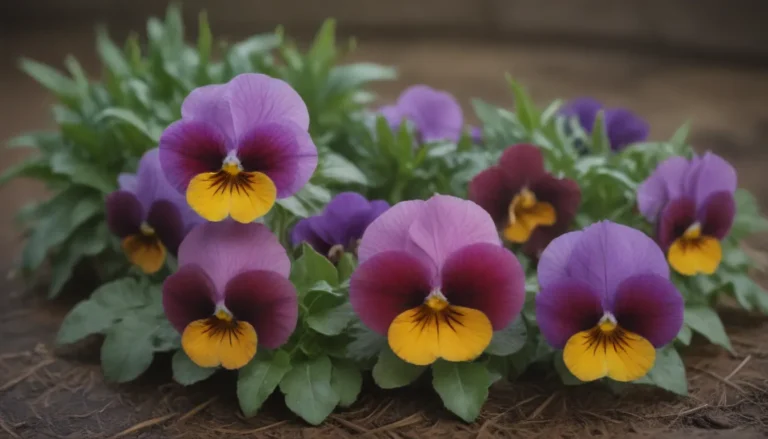The Ultimate Guide to Growing and Caring for St. John’s Wort

St. John’s wort, also known as goatweed or Klamath weed, is a versatile and beautiful herbaceous perennial shrub that is easy to grow and maintain. With its delicate yellow flowers and adaptability to various conditions, it has become a popular choice for many gardeners. In this comprehensive guide, we will explore everything you need to know about growing and caring for St. John’s wort to ensure that your plants thrive and bloom beautifully.
The Basics of St. John’s Wort
St. John’s wort is a resilient plant that can thrive in a variety of conditions. Here are some key characteristics of this herbaceous perennial:
- Prefers full sun but can tolerate partial sun
- Thrives in all types of soils and most pH levels
- Can survive winters in regions as cold as USDA zone 3
Remember to take precautions when planting St. John’s wort, as it can be toxic to people and pets.
St. John’s Wort Care Tips
Caring for St. John’s wort is relatively simple, as it is a hardy plant that can withstand challenging conditions. Here are some essential care tips to ensure your St. John’s wort plants flourish:
Warning
St. John’s wort has the potential to spread rapidly and become invasive in certain regions. It is officially listed as an invasive species in multiple states, particularly in the Pacific Northwest and the Midwest.
Light
- Plant St. John’s wort in full sun for optimal flower production in northern regions
- Provide some shade for the plant in southern regions
Soil
- Although St. John’s wort prefers well-drained soil, it can tolerate compacted ground
- It can thrive in acidic, neutral, or alkaline soils
Water
- Keep the plant well-irrigated during the establishment period
- Once mature, St. John’s wort is reasonably drought-tolerant
Fertilizer
- St. John’s wort performs best in fertile soils
- Amend the soil with compost annually for optimal results
Different Types of St. John’s Wort
While Hypericum perforatum is the most common variety, there are other cultivars and shrubby species within the Hypericum genus that may be more aesthetically pleasing, such as:
– Hypericum x inodorum ‘Elstead’
– Hypericum x moserianum ‘Tricolor’
Pruning Your St. John’s Wort
Due to its aggressive spreading nature, it is essential to prune St. John’s wort regularly, especially in early spring. Trim about one third of the plant and remove any dead branches to maintain its health and shape. This is also an excellent opportunity to remove any unwanted St. John’s wort plants that may have sprung up nearby.
Propagating St. John’s Wort
While St. John’s wort can spread easily on its own, you may also choose to propagate it through stem cuttings. Here’s how:
- Take a healthy stem cutting from the plant
- Remove the lower leaves
- Place the cutting in potting soil
- Keep the soil moist until roots develop
Growing St. John’s Wort From Seed
Starting St. John’s wort from seed is another viable option. Here’s how you can do it:
- Collect seeds from mature St. John’s wort plants
- Plant the seeds in potting soil
- Keep the soil moist until the seeds germinate
- Transplant seedlings into the garden when they are large enough
Potting and Repotting St. John’s Wort
Growing St. John’s wort in a pot can help prevent its spread via rhizomes or creeping stems. However, due to its rapid growth, you may need to repot the plant frequently. Here are some tips for potting and repotting:
- Use a pot that is one to two sizes larger than the current one
- Choose a container with excellent drainage
- Repot in early spring or early fall
- Use well-draining potting soil
Encouraging Blooms in St. John’s Wort
St. John’s wort should bloom reliably each year, providing beautiful yellow flowers with a unique fragrance. Here are some tips to encourage blooming:
Bloom Months
St. John’s wort blooms from summer to early fall, typically from June to September.
Flower Characteristics
The flowers of St. John’s wort are small, bright yellow, and emit a distinct turpentine-like fragrance.
Tips for More Blooms
- Provide ample sunlight
- Keep the soil moist
- Fertilize the plant in spring
In conclusion, growing and caring for St. John’s wort is a rewarding experience that can add beauty to any garden. By following these tips and guidelines, you can cultivate healthy, thriving plants that will brighten your landscape year after year. Remember to always respect the plant’s invasive potential and take necessary precautions to ensure a successful and sustainable garden. Happy gardening!





